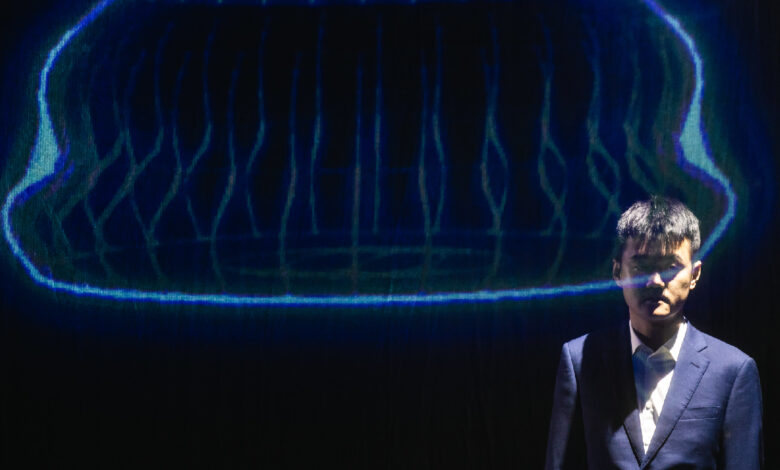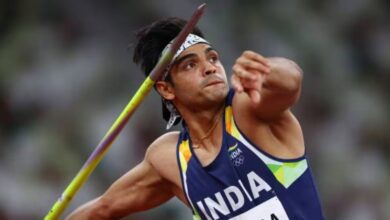Ding Liren reveals Richard Rapport as second, here’s why it matters

World Chess Championship: The first significant reveal of the World Chess Championship 2024 took place without any real flourish. No jaws dropped, no gasps were heard when Hungarian grandmaster Richard Rapport, who worked with Ding Liren at last year’s edition, was spotted. The world champion had promised in the press conference on Saturday that the world would see a few members of his team in the coming days even though he wouldn’t mention any names.“I have brought two seconds here. You can see them when the matches approach,” Ding had said at the press conference.
Players keeping the names of their seconds (chess players who help another player prepare for tournaments) a secret is an age-old tradition in World Chess Championship hory. When Viswanathan Anand played Veselin Topalov in 2010 for the crown, he had help from world champions like Garry Kasparov and Vladimir Kramnik. But that was only revealed with the crown already resting on the Indian’s head. When Anand took on Magnus Carlsen in 2013, Ukraine’s Pavel Eljanov, a master of the Caro Kann defence, was secretly enled the Norwegian because that was a line he wanted to opt against the Indian.
But Ding broke away from the playbook at last year’s World Chess Championship in Astana when Rapport turned up at the playing venue. Ding and Rapport were not hiding their professional relationship. They were parading it. It was a moment when the chess world did a double take. Most people did not even know they were friends, let alone close enough to join forces to win a World Chess Championship title. Carlsen would only bring his coach Peter Heine Nielsen and his family to the city hosting the World Chess Championship, preferring to have the seconds huddled away from sight.
On Sunday, journals in Singapore covering the World Chess Championship noticed the presence of Rapport again. But this time, understandably, there was no real surprise for anyone.
Smoke and mirrors at the World Chess Championship
Rapport had tried to brush off his links with Ding in an interview with The Indian Express in September. When asked what we had learnt about the form of Ding and D Gukesh at the Chess Olympiad, the Hungarian curiously said: “I don’t want to respond too much, because I’m not having working relations (with Ding). I still feel like I’m on friendly terms with Ding. So I don’t like to discuss this too much about friends.”
But on Sunday, in an interview with chess dot com, Ding confirmed that he had teamed up with Rapport.
Most of Gukesh’s team, meanwhile, still remains in the shadows. His trainer Grzegorz Gajewski has been with the 18-year-old since December 2022. Gukesh calls him the “biggest influence on his chess career in recent years besides my parents”.
“Gajewski’s biggest influence in my career has been the approach I have to chess. I was a very narrow-minded chess player. He opened me up to different approaches and ideas. His work is mostly on openings. My openings, and also other parts of my game, improved a lot with him,” Gukesh beamed.
At any World Chess Championship, the men behind the scenes matter. Because players spend months analysing the other player’s style, to the point they become predictable to each other. Kasparov once said that he spent so much time thinking about how Anatoly Karpov would play in the 1984 World Chess Championship that he started to fear he was becoming like Karpov himself. So the only way to get an edge in a 14-game match may be to try and surprise the opponent with an opening that they don’t see coming.
Kasparov famously used the Ruy Lopez system in the match against Nigel Short in 1993 and won three of the first four games. In the battle against Anand in 1995, he changed course mid-way, with both players having won a game each. The Russian chose to throw out his favourite openings and opted for the Dragon Sicilian, which he had never played before in a big tournament. Anand was handed two defeats from that ploy.
Kasparov himself was caught out five years later Kramnik when the younger Russian challenger opted to play the Berlin variation of the Ruy Lopez and tied Kasparov in knots.
How Richard Rapport influenced Ding Liren’s playing style
Rapport’s presence in Ding’s camp last year was credited with the Chinese grandmaster throwing some unconventional opening ideas at his opponent Ian Nepomniachtchi. Like when Ding played 4.3 (pushing his pawn to h3 in the fourth move of the game) with white pieces in Game 2. Seeing the move, Anand had actually chuckled on air while doing commentary. Anish Giri had joked that Ding had tried to play g3 and his hand had slipped to accidentally push the h pawn instead.
In the larger scheme of things, that move had not worked. Ding lost that game.
But in an era of chess engine-bred predictability in opening phases, this was as out-of-the-book as a grandmaster playing for a World Chess Championship could go. That move had come from Rapport’s laboratory of experimental chess.
So Rapport’s re-appearance on Ding’s side assumes significance. As Nielsen, who has been the trainer of both Anand and Carlsen in the past, said in a recent interview with the ‘New In Chess’ podcast: “It (Ding linking up with Rapport) was a shock to me. But I liked their strategy and the way they were doing it. Ding was changing himself considerably as a player, especially with white pieces. With white, he was always very classical, playing the English or the Catalan (systems). Very free-flowing positional style. He abandoned that to play very surprising opening ideas. He basically prepared seven single systems to open with white and be surprising. It was very out of character.”
Ding has revealed his first card, which may well turn out to be the joker in the pack.







